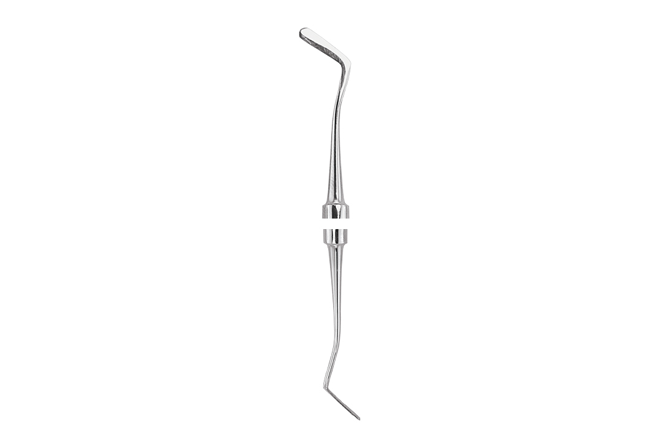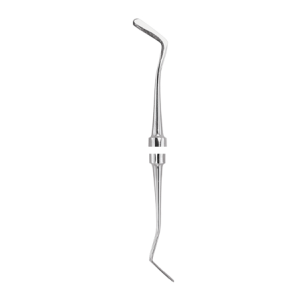Need help? Call us:
+91-9310354377
- ACCESSORIES
- NEW ARRIVAL
- LUXATIP
- IMPLANTOLOGY
- ORTHODONTICS
- ORAL AND MAXILLOFACIAL SURGERY
- ENDODONTIC AND CONSERVATIVE DENTISTRY
- CARVER
- COMPOSITE INSTRUMENTS TITANIUM BLUE
- MATRIX RETAINER
- COMPOSITE INSTRUMENTS TITANIUM GOLD
- CHISELS & HOE
- PLACEMENT INSTRUMENTS
- MARGIN TRIMMER
- COMPOSITE INSTRUMENTS SILICON BLACK/BLUE
- AMALGAM CARRIER
- RUBBER DAM FORCEP AND PUNCH
- COMPOSITE INSTRUMENTS ANTERIOR & POSTERIOR BLACK
- RUBBER DAM CLAMP
- COMPOSITE INSTRUMENTS ANTERIOR & POSTERIOR BLUE
- RUBBER DAM FRAME
- SPOON EXCAVATOR
- COMPOSITE INSTRUMENTS GOLD FLEXI THIN
- ENDO INSTRUMENT KITS
- PLUGGER/CONDENSERS
- RCT PLUGGER
- ART INSTRUMENTS
- PLASTIC FILLING INSTRUMENTS
- RCT SPREADERS & HEAT CARRIERS
- BURNISHER
- ROOT FRAGMENT STEIGLITZ
- DIAGNOSTICS
- PROSTHODONTIC
- PKT CARVERS COLOR CODED
- IMPRESSION TRAY HALF
- WAX KNIVES & SPATULA
- CROWN REMOVER
- ARTICULATING PAPER HOLDER & CROWN HOLDING FORCEP
- ANTERIOR AND POSTERIOR & ADJUSTABLE
- GINGIVAL CORD PACKER
- PROSTHODONTIC INSTRUMENT KITS
- CEMENT SPATULA & HIDEMANN SPATULA
- IMPRESSION TRAY DENTULOUS PERFORATED PEDO
- ARTICULATOR, PUTTY CUTTER & PLASTER SHEARS
- CALIPER IWANSON
- IMPRESSION TRAY DENTULOUS PERFORATED
- IMPRESSION TRAY DENTULOUS NON-PERFORATED
- WAX & MODELLING CARVER
- IMPRESSION TRAY EDENTULOUS PERFORATED
- PKT CARVERS
- IMPRESSION TRAY EDENTULOUS NON-PERFORATED
- ORAL SURGERY
- PROXITIP - LUXATING HYBRIDS
- EXTRACTION FORCEPS PREMIUM
- TOWEL CLAMPS, DRESSING & STERLISING FORCEPS
- EXTRACTION FORCEPS PREMIUM #BLACK
- EXTRACTION FORCEPS ERGONOMIC
- ALLIS & TISSUE FORCEPS
- RETRACTOR
- EXTRACTION FORCEPS SECURE
- METAL & FRAZIER SUCTION TUBE
- EXTRACTION FORCEPS PEDO STANDARD
- EXTRACTION FORCEPS ATRAUMATIC
- BONE CHISEL & MALLETS
- ROOT ELEVATOR PREMIUM
- EXTRACTION FORCEPS AMERICAN PATTERN
- EXTRACTION FORCEPS PEDO PREMIUM
- SCALPEL HANDLES
- ROOT ELEVATOR STANDARD
- CHEEK RETRACTORS & TISSUE RETRACTORS
- ROOT ELEVATOR LINDO LEVIAN
- PERIOSTEAL ELEVATOR & BONE FILE
- BONE RONGEURS
- DENTAL SYRINGE
- SCISSORS
- ASSORTED SURGICAL KITS
- TUNGSTEN CARBIDE SCISSOR & NEEDLE HOLDER
- NEW CLINIC SET UP KITS
- EXTRACTION FORCEPS STANDARD
- HEMOSTATS & NEEDLE HOLDERS
- INSTRUMENTS MANAGEMENT SYSTEM
- PERIODONTAL
- GRACEY CURETTE
- PERIO PROBES
- MC CALL CURETTES
- PERIOTOMES
- LANGER CURTTES
- PERIODONTAL SCALERS
- COLUMBIA CURETTES
- PERIODONTAL KNIVES
- SURGICAL CURETTE & BONE CURETTE
- PERIODONTAL FILES
- GRACEY CURETTE COLOR CODED
- PERIO INSTRUMENT KITS
- PERIODONTAL CHISEL
- VISTA TUNNELING PROCEDURE
- CORN SUTURE PLIER & POCKET MARKER
- TUNNELLING KNIVES
- TISSUE NIPPER & BLADE HOLDER
- SUB GINGIVAL SCALER
- SUPRA GINGIVAL SCALER
- MICRO SURGERY
PLASTIC FILLING INST. # PF13 # 3
PLASTIC FILLING INST. # PF13 # 3
₹300.00 Original price was: ₹300.00.₹240.00Current price is: ₹240.00.
Plastic Filling Inst. # PF13 # 3: A Detailed Overview
Plastic Filling Inst. # PF13 # 3 refers to a specific product used in various industrial and commercial applications. The term “plastic filling” generally relates to a process where plastic materials are used to fill gaps, cracks, or voids in a variety of structures, machines, and systems. PF13 # 3 could represent a particular formula, type, or model number of a filling material that has been designed for a specific purpose. Below, we break down the key aspects of this product.
Composition and Properties of Plastic Filling PF13 # 3
PF13 # 3 is typically formulated with specific types of plastic resins and fillers that provide superior adhesion, flexibility, and durability. The combination of these materials ensures that the product can effectively seal and fill spaces, offering long-lasting results. Depending on the intended use, the composition can be altered to suit particular temperature ranges, environmental conditions, and surface types.
The plastic filling material is often enhanced with additives to improve features such as resistance to moisture, UV degradation, or chemicals. This makes PF13 # 3 suitable for a wide range of environments, including automotive, construction, and electronics industries, where resilience and longevity are crucial.
Applications of PF13 # 3 Plastic Filling
Plastic filling materials like PF13 # 3 are commonly used in industries where voids or gaps in machinery or products need to be filled for both functional and aesthetic purposes. These applications include:
- Automotive Repair and Manufacturing: PF13 # 3 can be used to fill cracks and gaps in body panels, bumpers, and other plastic components of vehicles. The material’s ability to bond with various plastics makes it an ideal choice for repairs, ensuring that the filled areas maintain strength and flexibility without compromising the structural integrity of the vehicle.
- Electronics Assembly: In the electronics industry, plastic filling is crucial for protecting internal components from damage. PF13 # 3 can be used to fill voids in electronic devices, such as in the housing of mobile phones or computers. The filler helps to improve insulation, prevent dust infiltration, and protect sensitive internal parts.
- Construction: In construction, PF13 # 3 is often used for filling voids in plastic pipes, seals, and other plastic structures. It can also be employed to patch up minor cracks in plastic panels and fixtures, ensuring that the integrity of the structure is maintained and preventing further damage from environmental factors.
Application Process
The application process for PF13 # 3 is straightforward but requires attention to detail. The surface to be filled must be clean, dry, and free of contaminants. The filler can be applied with a trowel, spatula, or similar tool depending on the size and location of the gap or crack. Once applied, the filler is typically left to cure for a specified amount of time, during which it hardens to form a solid, durable bond.
Advantages of PF13 # 3 Plastic Filling
PF13 # 3 offers several advantages in its respective applications. Its versatility allows it to be used in a variety of industries, and its strong adhesive properties ensure that the filled areas remain intact even under stress. Moreover, the ability of PF13 # 3 to withstand harsh environmental conditions makes it a reliable choice for both indoor and outdoor uses.
In conclusion, Plastic Filling Inst. # PF13 # 3 is a high-quality, multipurpose filler that plays an essential role in maintaining the functionality and appearance of products across several industries.
Recently Viewed Items
LOWER MOLAR No. 73
LOWER MOLAR No. 22S
LOWER MOLAR No. 86
LOWER MOLAR No. 86A
ALBRECHT FORCEP MOLAR NO. 2
ALBRECHT FORCEP PREMOLAR NO. 1
LOWER MOLAR No. 73
LOWER MOLAR No. 22S
LOWER MOLAR No. 86
LOWER MOLAR No. 86A
ALBRECHT FORCEP MOLAR NO. 2
ALBRECHT FORCEP PREMOLAR NO. 1
LOWER MOLAR No. 73
LOWER MOLAR No. 22S
You may add any content here from XStore Control Panel->Sales booster->Request a quote->Ask a question notification
At sem a enim eu vulputate nullam convallis Iaculis vitae odio faucibus adipiscing urna.








Reviews
There are no reviews yet.